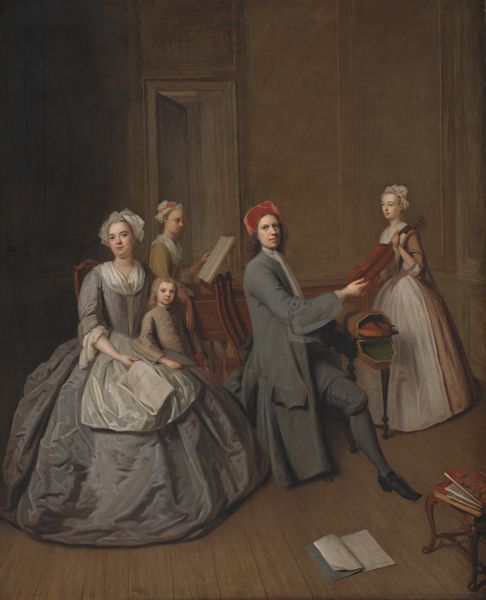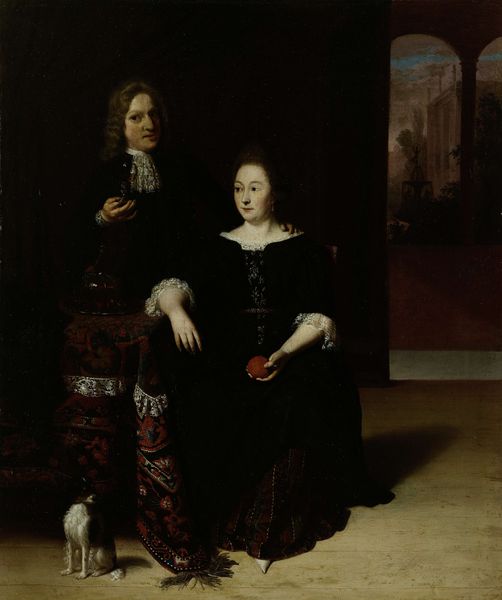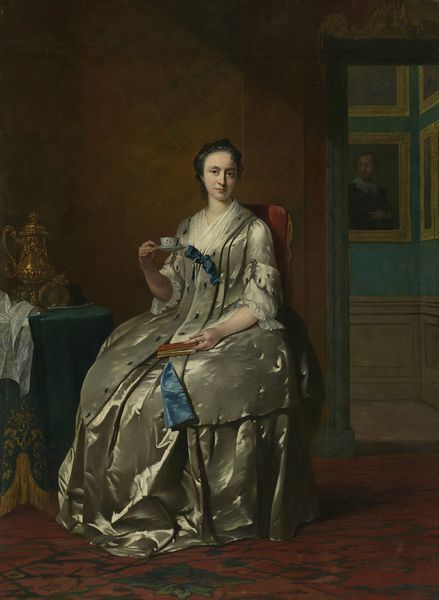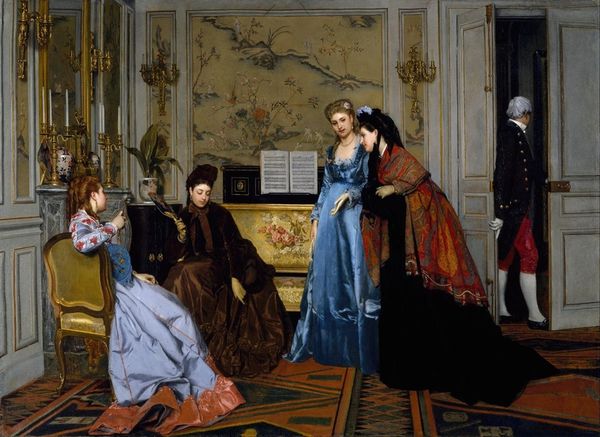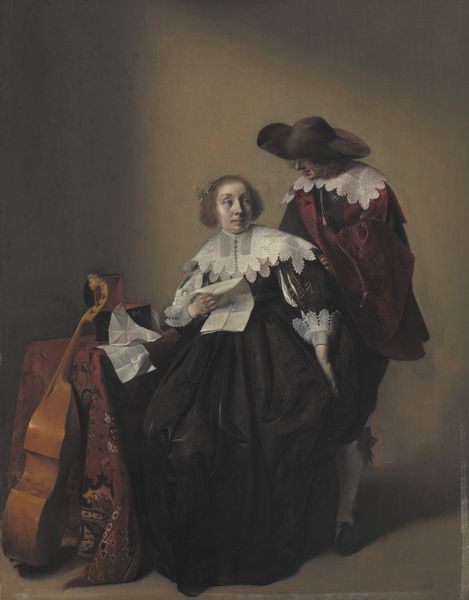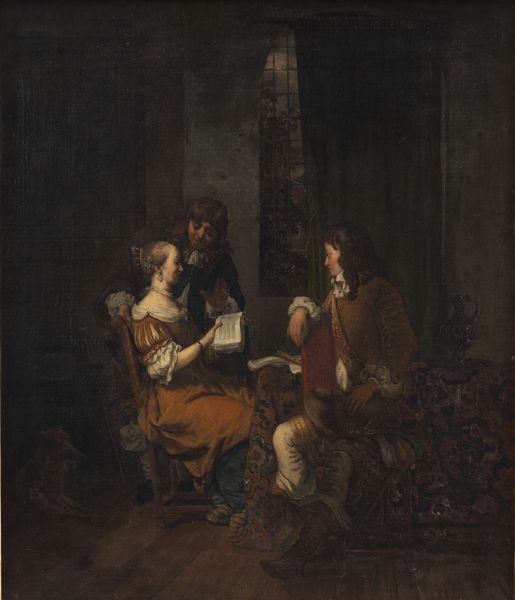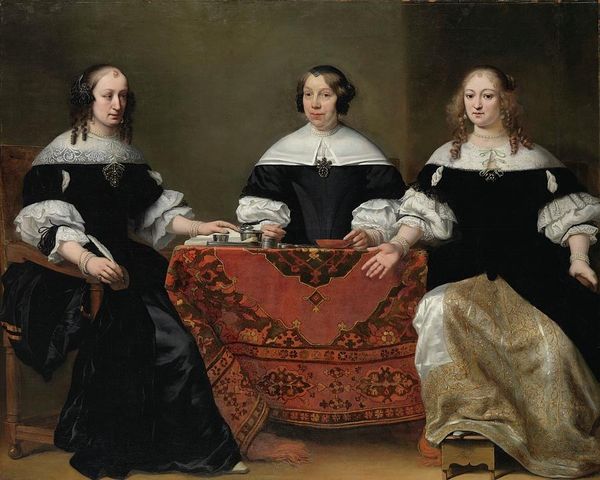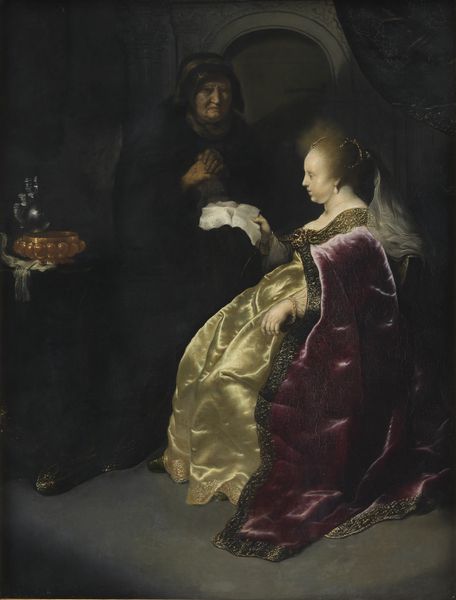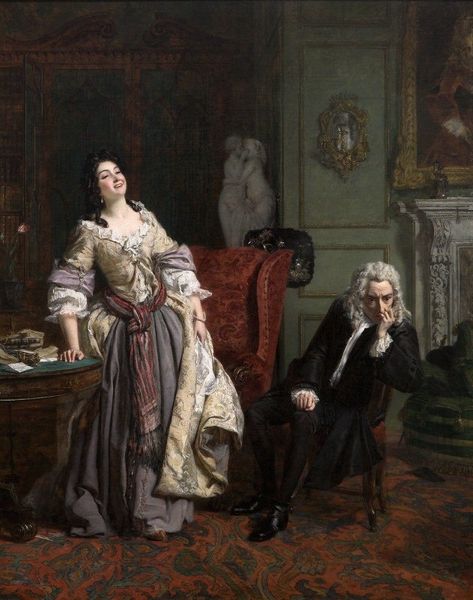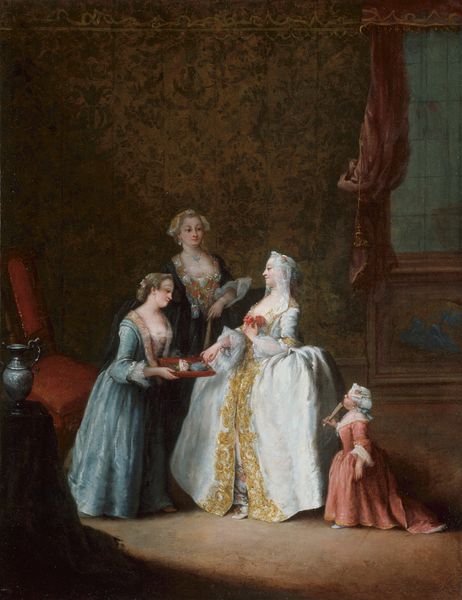
painting, oil-paint
#
portrait
#
baroque
#
painting
#
oil-paint
#
figuration
#
historical fashion
#
group-portraits
#
genre-painting
#
realism
Dimensions: 79.1 x 91.8 cm
Copyright: Public domain
Curator: Here we have Jacob Ochtervelt's "Family Portrait," dating from 1675, currently residing at the Norton Simon Museum. Editor: It's… striking, isn't it? The subdued color palette against the darkness gives it such a serious, almost mournful quality. The figures seem suspended, almost floating within the undefined space. Curator: Consider the layers of craftsmanship embedded here. Ochtervelt used oil paints, a relatively new medium at the time that allowed for unparalleled detail. Look closely at the woman's satin dress; see how he captures the light as it drapes? This involved sourcing materials like finely woven textiles, pigments from ground minerals, and the labour of tailors. Editor: That's an astute observation about the light. I see that the satin serves to accentuate their status through material means, but it’s the objects in the portrait, such as the apple and the dog, that immediately capture my attention. The dog seems to embody loyalty and domesticity while the apple may be associated with fertility, health, and even temptation or status symbol depending on your point of view. The symbolic interplay enhances the work beyond surface-level representation. Curator: The consumption habits indicated in this type of piece point directly to burgeoning trade networks. Pigments like ultramarine were transported from overseas, adding layers of global significance to domestic scenes, shifting economic patterns shaping the art market and subject matter itself. Editor: I think what also draws me to it is how it reflects societal norms of the period. The family unit idealized and formalized into art – perpetuating particular social mores regarding the role of each figure portrayed. Curator: But isn’t that what art so often is – an attempt to codify a moment in material terms? The very choice to paint a portrait is indicative of social class; portraiture existed to cement a legacy. Editor: It makes me wonder how differently a contemporary artist might choose to represent such family dynamics, and to consider what aspects of today's consumer practices might be revealed if depicted with this kind of care. Curator: Perhaps the portrait speaks to the universality of familial performance—regardless of temporal context, the act of posing, adorning oneself, seeking permanence remain profoundly human impulses mediated by shifting tools and supplies. Editor: It certainly has given us a lot to contemplate about both then and now. Thanks to Jacob Ochtervelt's careful representation.
Comments
No comments
Be the first to comment and join the conversation on the ultimate creative platform.
